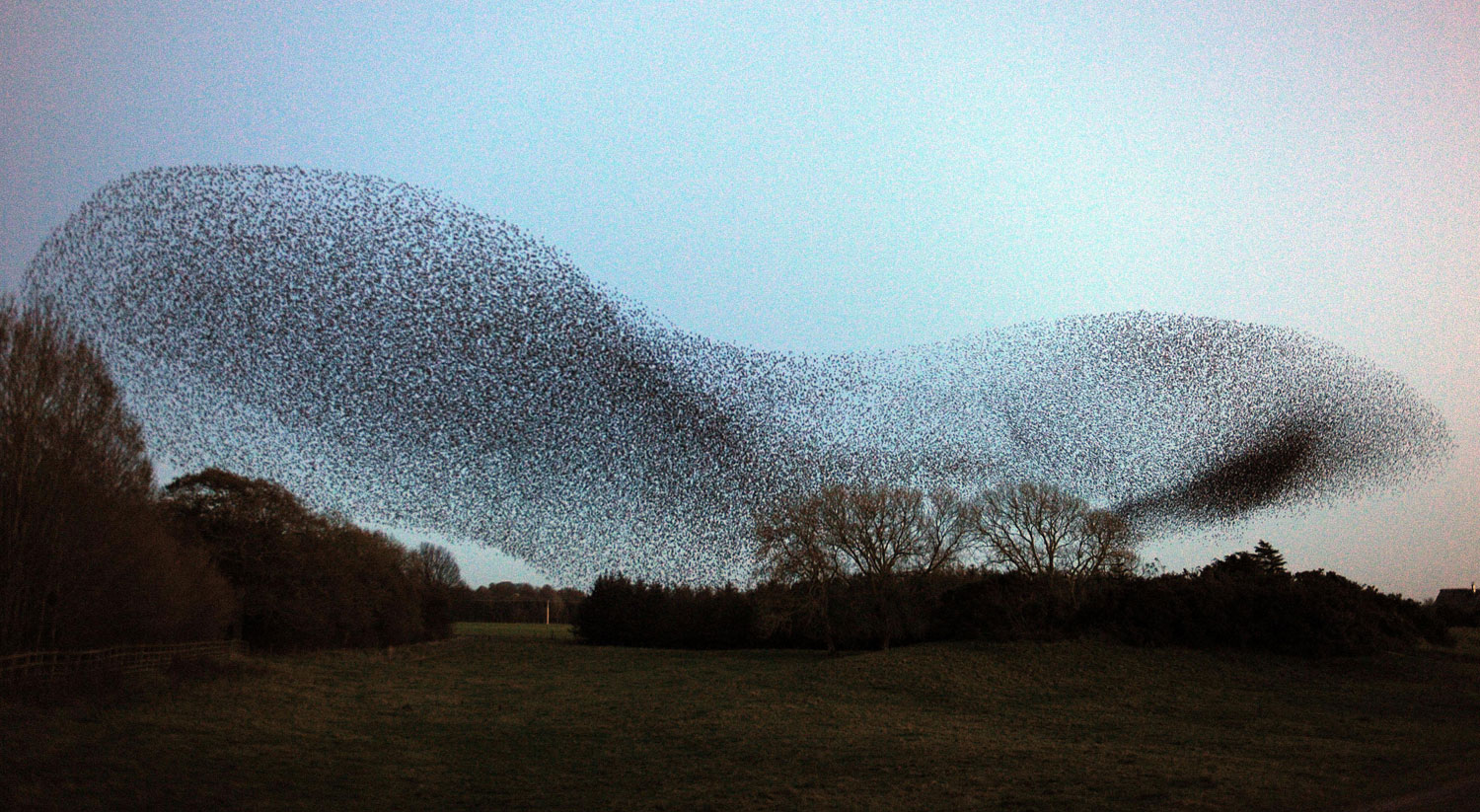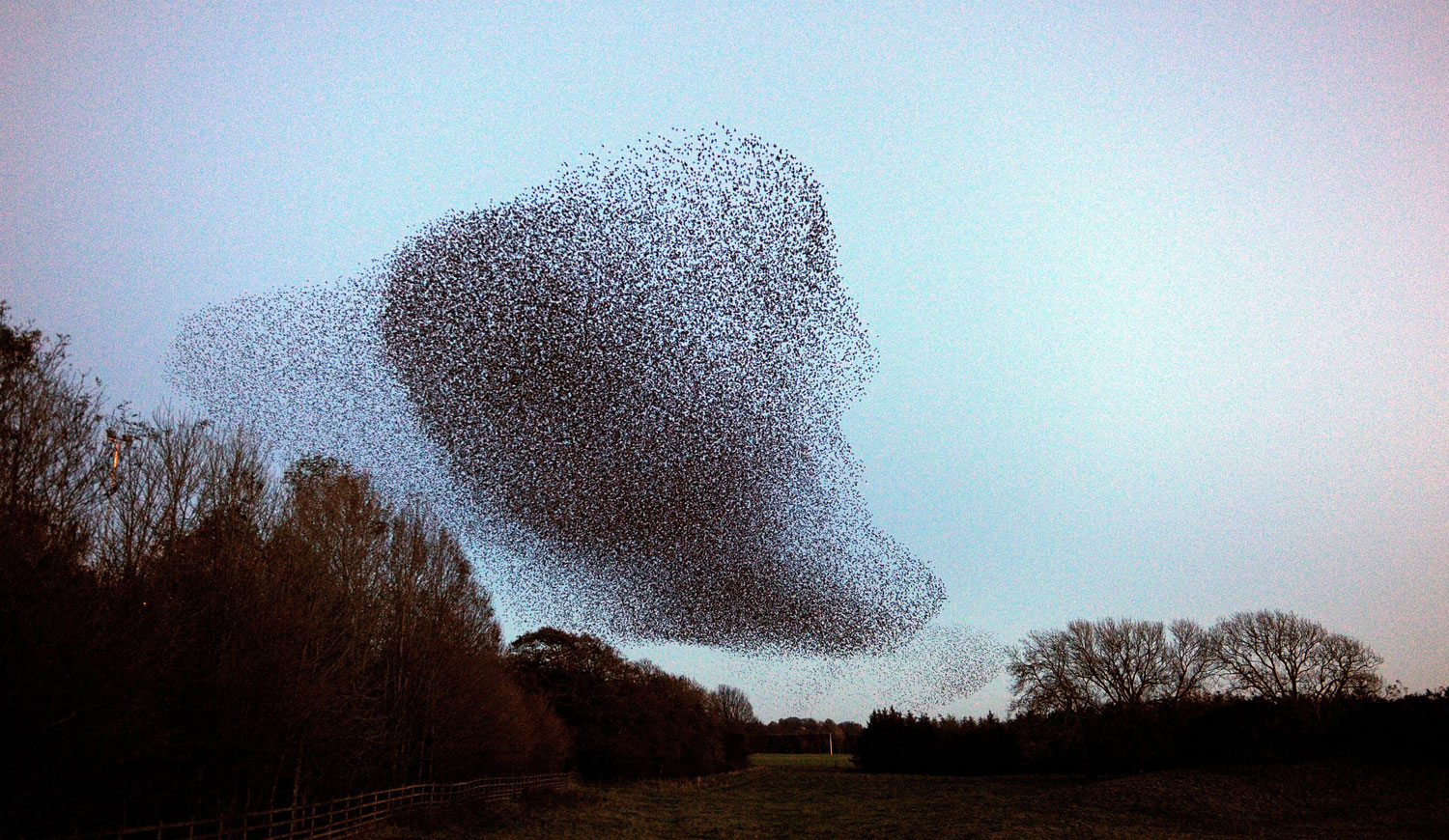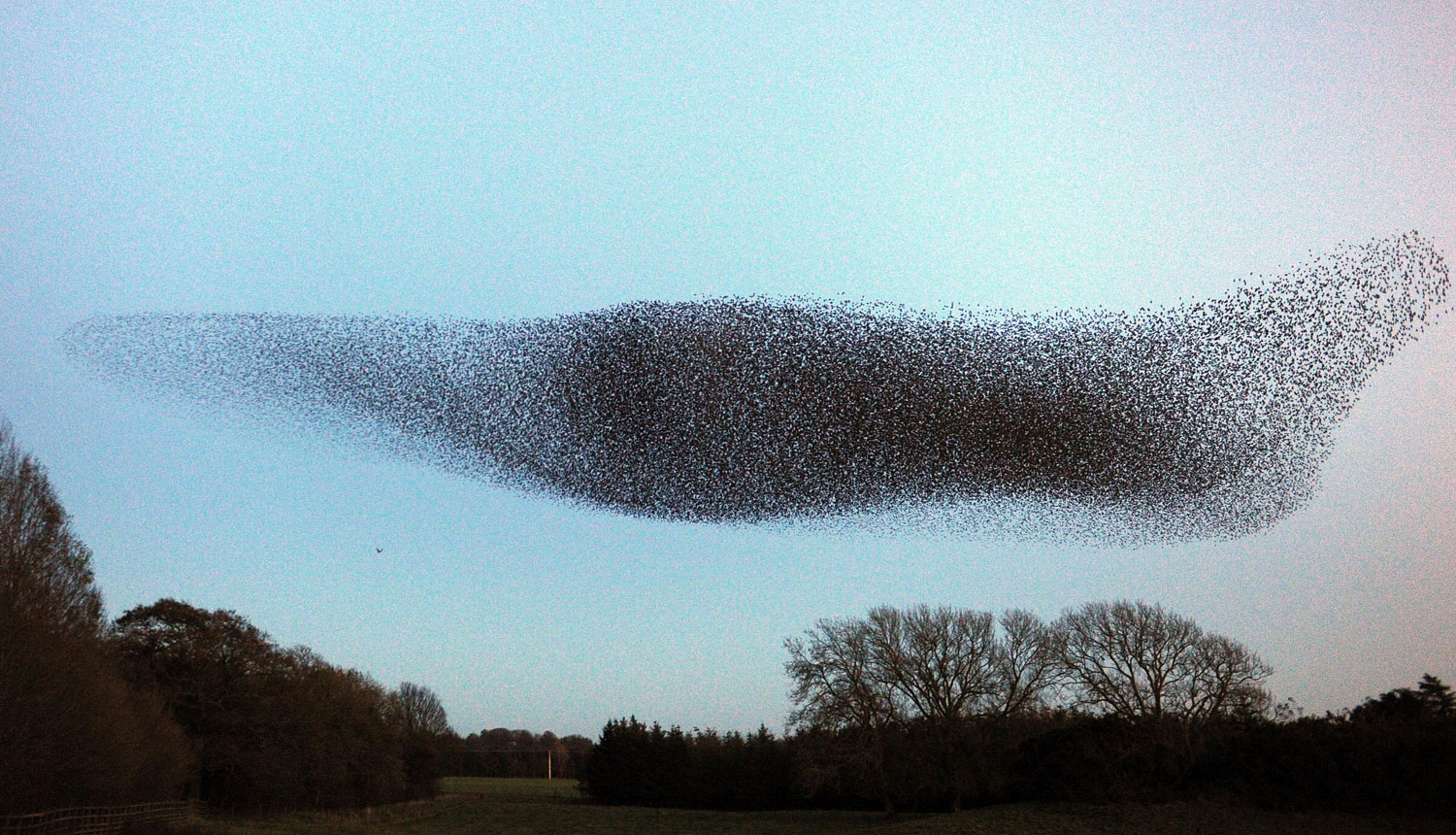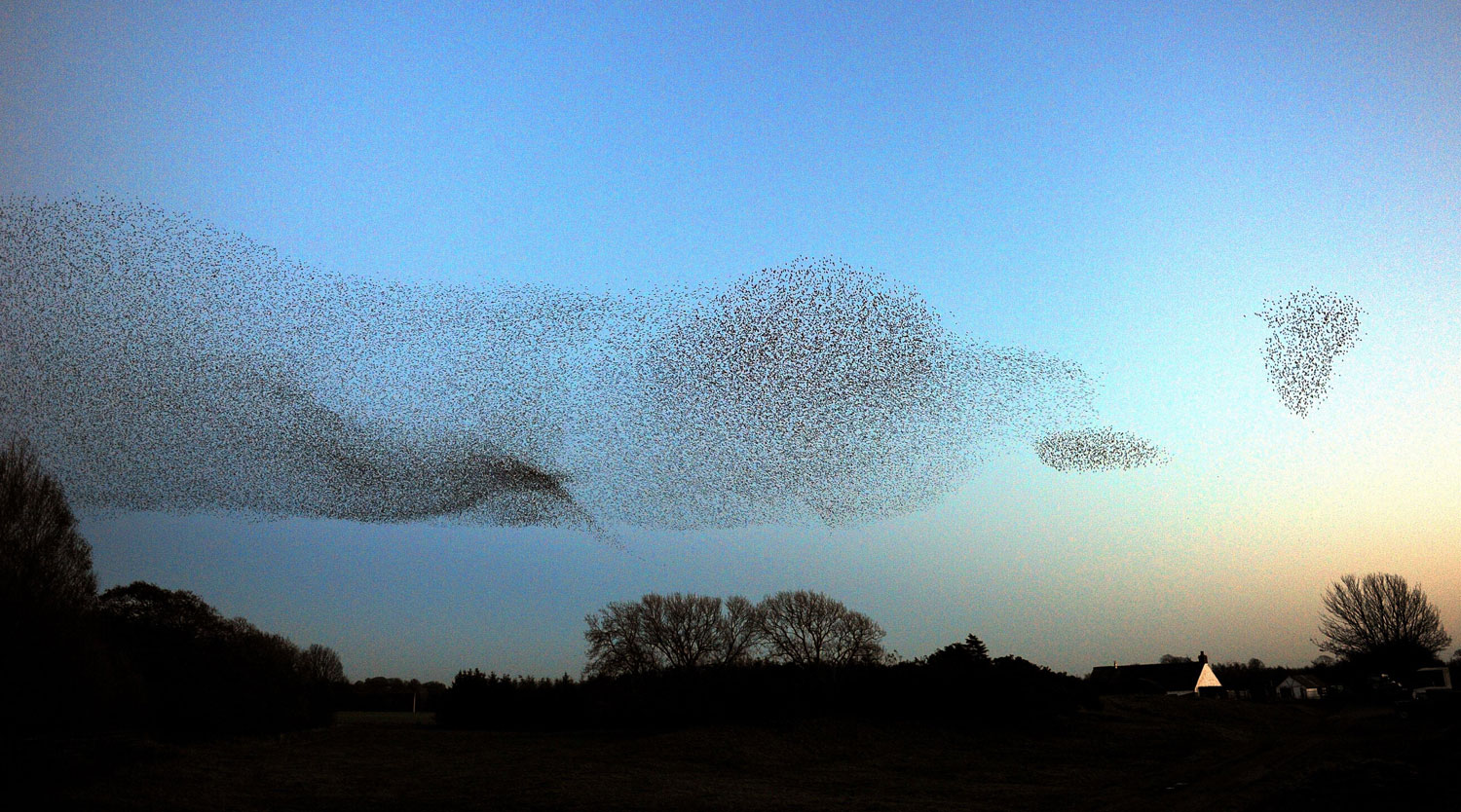
No one knows why they do it. Yet each fall, thousands of starlings dance in the twilight above Gretna, Scotland. The birds gather in magical shape-shifting flocks called murmurations, having migrated in the millions from Russia and Scandinavia to escape winter’s bite. Scientists aren’t sure how they do it, either. Even complex algorithmic models haven’t yet explained the starlings’ acrobatics, which rely on the tiny bird’s quicksilver reaction time of under 100 milliseconds to avoid aerial collisions—and predators—in the giant flock. Despite their show of force in the dusky sky, starlings have declined significantly in the UK in recent years, perhaps because of a drop in nesting sites. The birds still roost in several of Britain’s rural pastures, however, settling down to sleep (and chatter) after the evening’s ballet.






More Must-Reads from TIME
- Where Trump 2.0 Will Differ From 1.0
- How Elon Musk Became a Kingmaker
- The Power—And Limits—of Peer Support
- The 100 Must-Read Books of 2024
- Column: If Optimism Feels Ridiculous Now, Try Hope
- The Future of Climate Action Is Trade Policy
- FX’s Say Nothing Is the Must-Watch Political Thriller of 2024
- Merle Bombardieri Is Helping People Make the Baby Decision
Contact us at letters@time.com